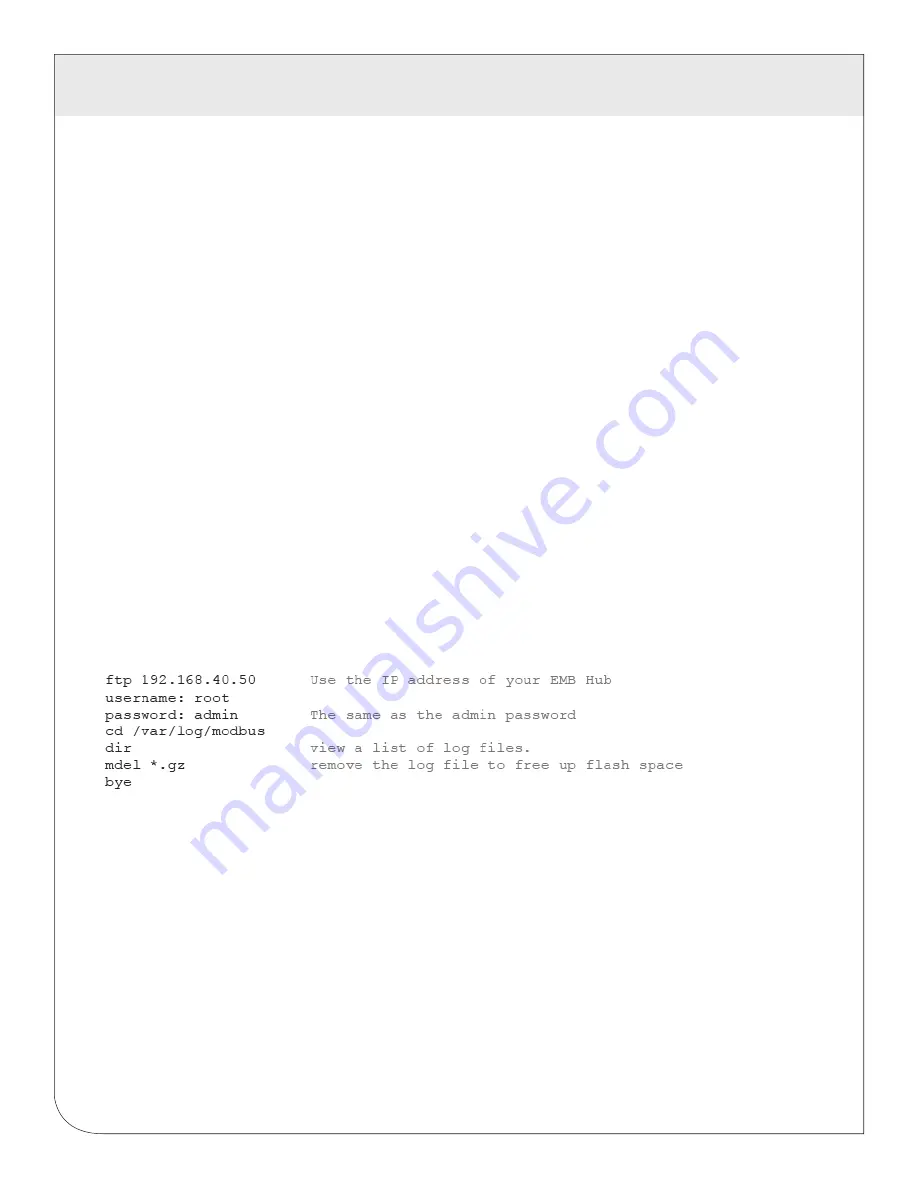
37
15 RETRIEVING DATA FROM THE EMB HUB
15.4 HTTP/Post Upload To Your Database Server
•
EMB Hub uploads data directly to your webserver or database server.
•
You must supply a script to process the incoming data. Sample script for ASP and PHP are available
upon request.
• Requires web server, CGI Scripting and, database (SQL) knowledge.
• Alarm processing available by processing data on your server when data is uploaded.
• Designed for integration with existing energy reporting systems.
• Contact Leviton technical support for further details and sample scripts.
15.5 Removing Data From the EMB Hub
When using an HTTP/Post method to allow the EMB Hub to push data to a database server, the EMB Hub
will automatically remove log files from its flash memory once the EMB Hub has confirmed that the file was
received by the database server.
If you are using the EMB Hub with a standalone mode, you can use FTP to delete log files from the flash
memory.
For FTP, the process is essentially the same process as the manual FTP data download. For more
information on FTP access to the EMB Hub, please view the FAQ and Technotes section at leviton.com.
Steps for Microsoft Windows command prompt FTP.
Use the following commands.
The “mdel” command will tell the FTP software to delete all files ending in .gz in the current directory. Some
FTP clients will allow you to specify a command “prompt” prior to using “mdel” that will prevent the FTP
client software from asking if you are sure you wish to delete each file.
15.6 Linking to EMB Hub Device Status Pages
It may be helpful to create a shortcut or a hyperlink on another web page that will direct the browser to bring
up a specific device status page in your browser. To do this, right click on the page and select properties.
The URL for the page will be shown on that dialog. Simply copy/paste this URL into your link.
The EMB Hub can provide Modbus device data in XML format. This feature, coupled with browser based
AJAX (Javascript) can provide a very powerful tool to allow the creation of custom web pages. Further
examples of XML and its uses are available on the Leviton website in the Documentation/Technotes
section.
WEB
VERSION





































